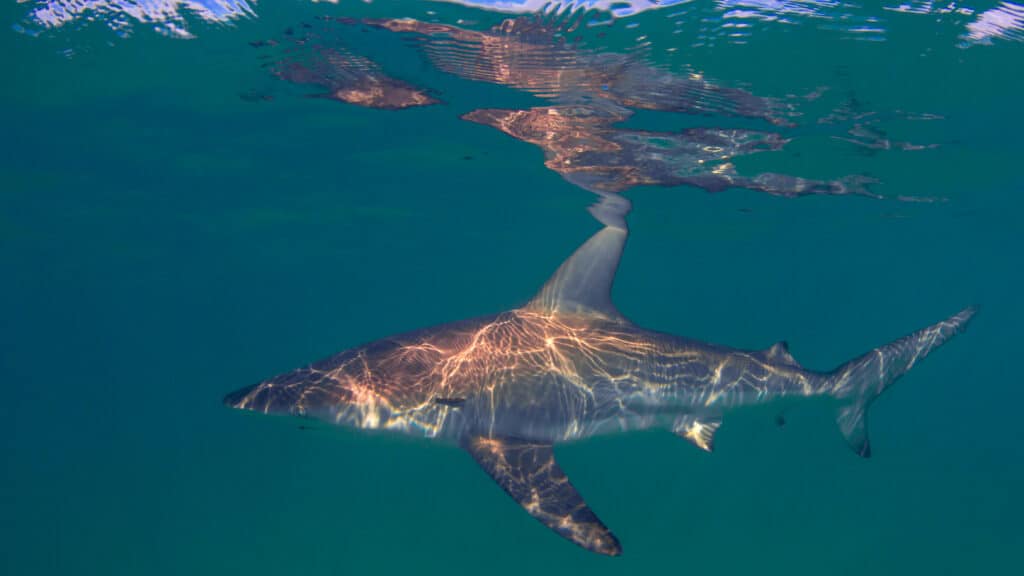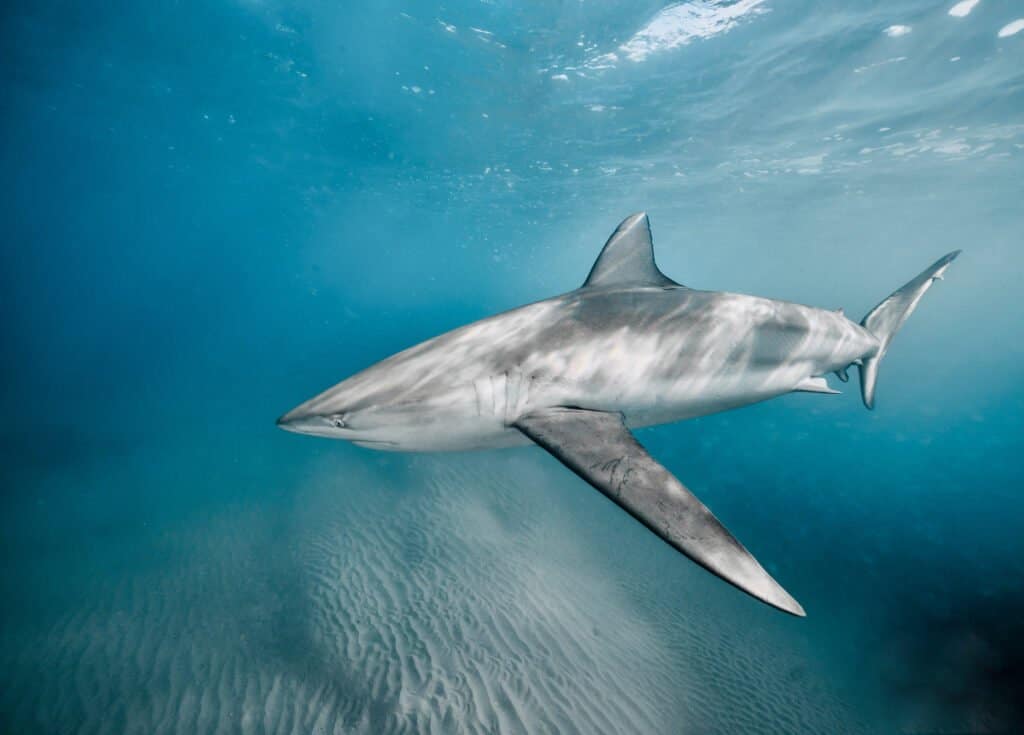Other than whales, sharks are some of the largest animals you’ll find under the sea. Take the whale shark, for example, which can grow to be 33 feet long — the same as the height of three giraffes! However, whale sharks aren’t the only super-sized sharks out there. Keep reading to discover more about the largest dusky shark ever caught off Florida!
Dusky Sharks: Profile
Before learning about the largest dusky shark ever caught, you may not know exactly what a dusky shark is. After all, they’re not as widely known as sharks like the great white or the tiger shark.
The dusky shark is a species of requiem shark, which means it is closely related to sharks like the sandbar shark, tiger shark, bull shark, blacktip shark, and grey reef shark. While requiem sharks can vary in size, the dusky shark is actually on the larger end of the spectrum — as you’ll learn more below with the largest dusky shark.
Like with other species of shark, hunting has placed a strain on their populations. Many people hunt sharks like dusky sharks for their fins as well as their livers for oils. This, paired with their slow reproduction rate, has placed the dusky shark on the International Union for Conservation of Nature’s vulnerable list.
The dusky shark gets its name from its dark coloration. However, this is only one of its many names. Other names for the dusky shark include:
- Bay shark
- Brown shark
- Brown dusky shark
- Dusky ground shark
- Brown common gray shark
- Shovelnose shark
- Slender whaler shark.

Dusky sharks are named for their dark coloring.
©Rich Carey/Shutterstock.com
Range and Habitat
Dusky sharks are actually common sharks across the world. They’re most often found in tropical and subtropical regions, especially in the Atlantic. However, they’re also a common sight in the Indian Ocean, the Mediterranean Sea, and the Pacific Ocean. This means that, although sightings are the most common from Massachusetts in the United States down as far south as the southern tip of Brazil, they can also be spotted in Africa, Europe, Australia, and certain Islands in Asia.

Dusky sharks prefer tropical and temperate waters.
©sirtravelalot/Shutterstock.com
Diet
There are a few things that the dusky shark won’t eat. Considered generalists, dusky sharks will eat a little of everything, although they’re most often seen hunting near the bottom – just like the Great Hammerhead.
The dusky shark eats most fish. This includes common fish like tuna, mackerel, and herring but also includes reef fish like barracuda, other sharks, and even some invertebrates like barnacles and sea stars. While other sharks have no problem taking on other, larger prey, this is a bit rare for dusky sharks. However, they have been known to eat sea turtles and scavenge the remains of marine mammals like whales. They’ve even been seen eating human trash.
This diverse diet has allowed the dusky shark to grow into some of the largest sharks around.
The Largest Dusky Shark Ever Caught Off Florida
Imagine this. It’s May 28, 1982, not even the first day of summer, but the weather is already warm and balmy, thanks to your location in sunny Longboat Key, Florida. You’re fishing, and then you get a bite. For Warren Girle, this day was a day for the record books.
You see, on this day, Warren Girle caught the largest dusky shark ever. While scientists have estimated that these sharks can grow to be up to 800 pounds, they tend to only be seen in the 400 range. In fact, even pregnant females tend to weigh less than 500 pounds.
However, the dusky shark Warren Girle caught in 1982 weighed a whopping 764 pounds! That’s almost double the average weight of a single dusky shark. As a result, it’s no surprise that, even to this day, Girle’s catch is considered to be the largest dusky shark ever caught.

The largest dusky shark caught off Florida weighed 764 pounds.
©Rich Carey/Shutterstock.com
The photo featured at the top of this post is © sirtravelalot/Shutterstock.com
Thank you for reading! Have some feedback for us? Contact the AZ Animals editorial team.






